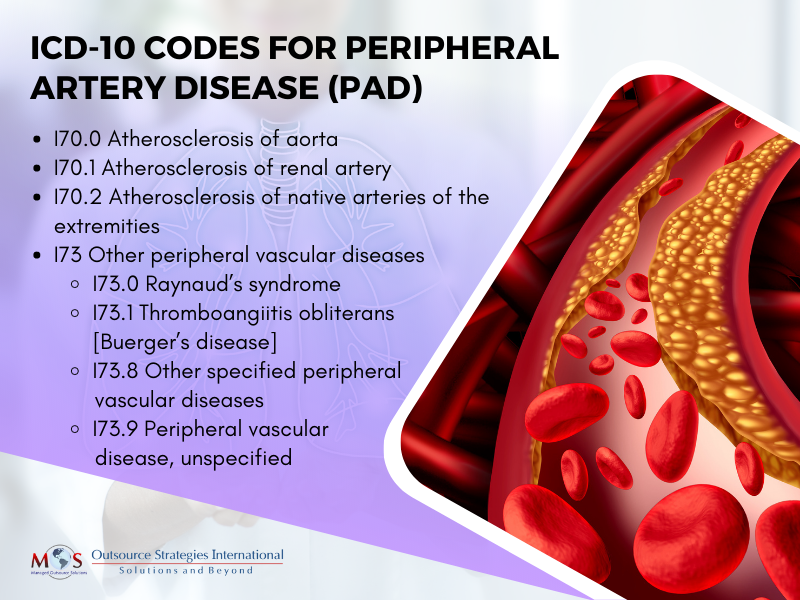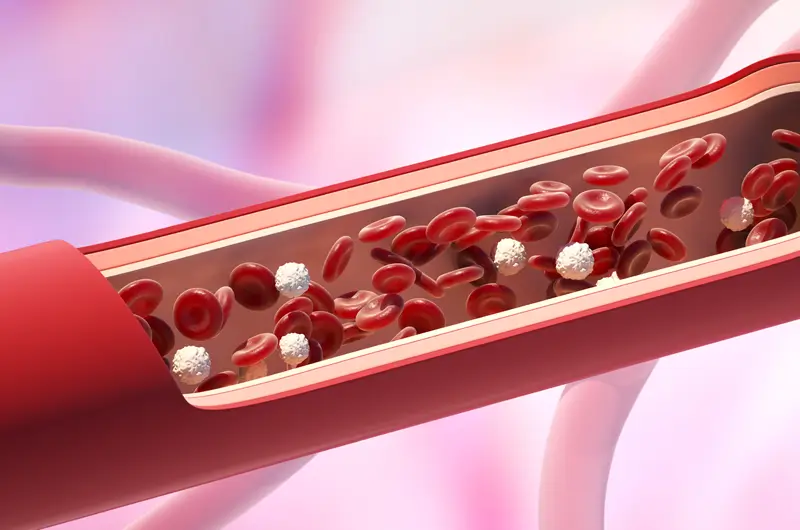Peripheral artery disease (PAD) or peripheral vascular disease refers to a medical condition that impacts blood vessels outside the heart and brain. This condition can lead to reduced blood flow, primarily affecting the arms, legs, kidneys, and stomach. Accurate documentation is essential to validate medical necessity and select appropriate billing codes. By partnering with an experienced cardiology medical billing company, healthcare providers can ensure precise and prompt claim submission, resulting in optimal reimbursement for their services.
Certain lifestyle and health-related factors can increase the risk of developing PAD, including smoking, obesity, high blood pressure, diabetes, high cholesterol levels, inflammation of blood vessels, a family history of heart disease, elevated levels of C-reactive protein or homocysteine, and exposure to radiation. Major symptoms of PAD are – leg pain, numbness or weakness, sores on the toes, feet or legs that won’t heal, slower growth of the toenails, skin color changes on the legs, painful cramping in one or both of the hips, thighs or calf muscles after certain activities, weak pulse in the legs or feet, and hair loss or slower hair growth on the legs.
ICD-10 Codes for Peripheral Artery Disease

- I70.0 Atherosclerosis of aorta
- I70.1 Atherosclerosis of renal artery
- I70.2 Atherosclerosis of native arteries of the extremities
- I70.20 Unspecified atherosclerosis of native arteries of extremities
- I70.21 Atherosclerosis of native arteries of extremities with intermittent claudication
- I70.23 Atherosclerosis of native arteries of right leg with ulceration
- I70.24 Atherosclerosis of native arteries of left leg with ulceration
- I70.26 Atherosclerosis of native arteries of extremities with gangrene
- I70.29 Other atherosclerosis of native arteries of extremities
- I73 Other peripheral vascular diseases
- I73.0 Raynaud’s syndrome
- I73.00 …… without gangrene
- I73.01 …… with gangrene
- I73.1 Thromboangiitis obliterans [Buerger’s disease]
- I73.8 Other specified peripheral vascular diseases
- I73.81 Erythromelalgia
- I73.89 Other specified peripheral vascular diseases
- I73.9 Peripheral vascular disease, unspecified
- I73.0 Raynaud’s syndrome
Various tests are conducted to confirm the presence of PAD, such as – Ankle-brachial index (ABI), Ultrasound of the legs or feet, Angiography, Computed tomographic angiography (CT), and Magnetic Resonance Angiography (MRA). In addition, blood tests will also be performed to check for conditions related to PAD such as high cholesterol, high triglycerides and diabetes. Treatment modalities for peripheral artery disease include a combination of medications and lifestyle changes such as eating a healthy diet, regular physical exercise, and quitting smoking.
Accurate reporting of specific ICD-10 codes for Peripheral Artery Disease (PAD) is crucial for healthcare providers. It ensures proper reimbursement and streamlined claim submission. A professional medical billing company can assist physicians in achieving precise coding, maximizing reimbursement, and maintaining compliance with coding guidelines.
Ensure accurate and timely reimbursement!
Ask about our cardiology billing solutions at (800) 670 2809
Get a free trial at OSI!




